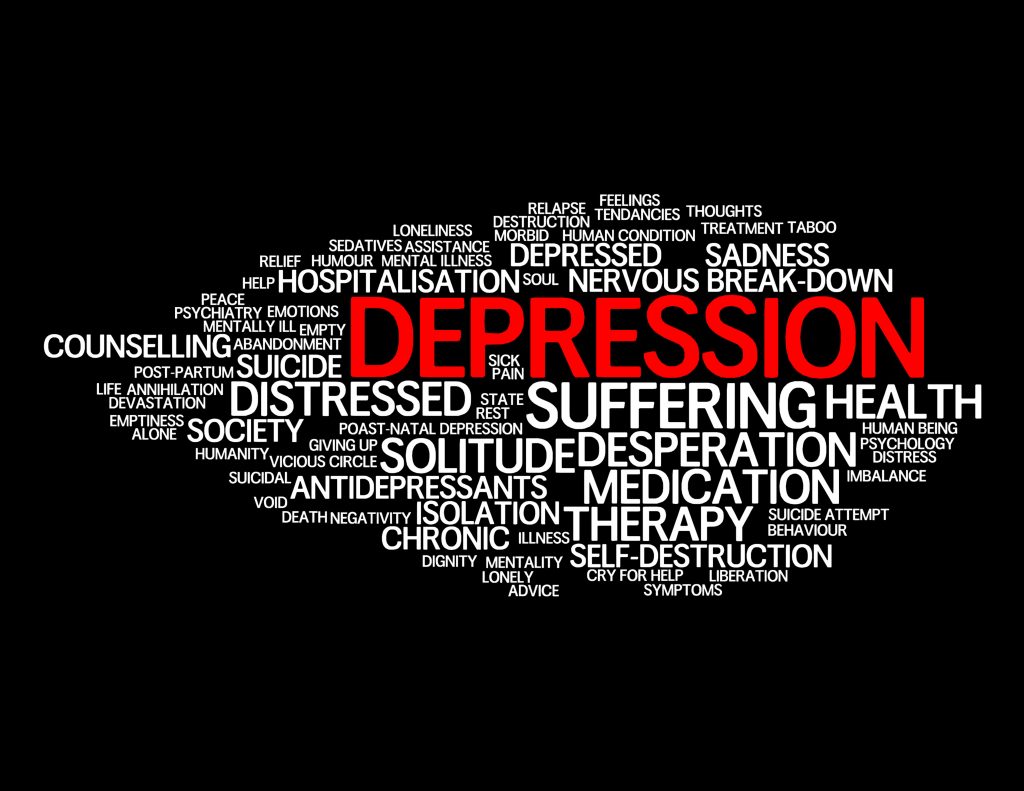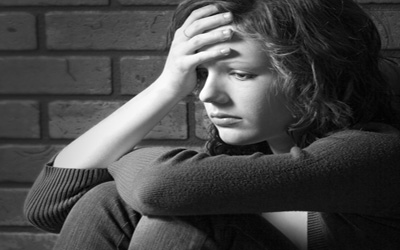As a psychologist, one of the primary mental health conditions I have encountered with my clients is depression. Most, if not all, other psychologists share the same sentiment. It is not a surprise since depression is one of the most common mental health conditions in existence. Sadly, most people still do not understand what depression is and how it affects a person’s life.

What is depression?
Depression is a common yet severe mood disorder. It features severe symptoms that can affect the way someone feels, thinks, and handles daily activities. This mood disorder is characterized by persistent feelings of sadness and loss of interest.
Symptoms of depression
According to DSM-5, a manual used by doctors and psychologists to diagnose mental health disorders, depression features the following primary symptoms;
- Persistent feelings of sadness, emptiness, and or loneliness
- Angry outbursts
- Irritability and frustration even over trivial issues
- Loss of interest in most or all normal activities like hobbies, sports, social interactions, sex, and eating, to name a few.
- Sleep changes or disturbances (insomnia or sleeping too much)
- Lack of energy to carry out the simplest tasks
- Anxiety, agitation, and restlessness
- Feelings of worthlessness often triggered by a fixation on past failures
- Self- blame
- Change in eating patterns (overeating or not eating at all)
- Trouble concentrating and making decisions
- Memory loss
- Suicidal thoughts
- Self-harm like cutting
- Unexplained physical problems like backaches, joint pains, digestive issues, and headaches that don’t go away even with treatment
The symptoms mentioned above are widespread. However, not everyone with depression will experience the same ones. Some may experience all the signs in the list, and some may experience several but not all of them. The symptoms displayed depend on the severity of the depression. It is also worth noting that some of these symptoms may come and go. However, depending on the severity of the depression, some people may experience symptoms for a long time.
Most of the time, outside people do not notice when someone is suffering from depression until they become severe. The reason is that most of the symptoms of depression are not visible or tangible. They are emotional and psychological. However, as the condition becomes severe, you may start to witness physical symptoms and behavior changes in someone going through depression.
It is also worth mentioning that children can also experience depression. Common signs and symptoms of depression in children are;
- Sadness, irritability, clinginess, aches, and pains
- Refusal to go to school
- Weight challenges (underweight or overweight)
- Constant worry
- Refusal to partake in regular childhood activities like going on play dates
In teens, depression can be characterized by the following signs and symptoms;
- Sadness, irritability,
- Low self-esteem and feeling negative and or worthless
- Extreme sensitivity
- Loss of interest in usual activities
- Low attendance and performance in school
- Change in eating and sleeping patterns
- Avoidance of social interaction
- Constantly feeling misunderstood
- Self-harm
- Anger and aggressiveness
People who have not been through depression have a hard time understanding the disorder. This, coupled with ignorance, is the main reason you will find people telling those suffering from depression to snap out of it, make an effort, or pushing them to do things.

Forms of depression
Depression manifests in various forms. Some are more severe than others. The primary forms of depression are:
Persistent depressive disorder
Also known as dysthymia, persistent depressive disorder is a depressed mood that lasts for a long time. It may last for up to two years. This is one of the most severe forms of depression. A person diagnosed with this type of depression may experience significant depression episodes with periods of severe symptoms.
Postpartum depression
This is a common type of depression experienced by women after giving birth. Some people refer to it as the baby blues. However, it is worth noting that postpartum depression and baby blues are entirely different. Baby blues is a relatively mild depressive and anxiety episode that usually clears off within two weeks or less after delivery. On the other hand, women experiencing postpartum depression go through full-blown major depression either during or after pregnancy. This type of depression causes extreme sadness, anxiety, exhaustion, and detachment from the newborn and other people. Mothers experiencing this type of depression have difficulty completing daily care activities for their babies and themselves.
Psychotic depression
This type of depression occurs when someone has severe depression accompanied by some forms of psychosis (like delusions, hearing or seeing upsetting things, and hallucinations). The psychotic symptoms usually feature a depressive theme. For instance, one may have illusions about illness, poverty, or guilt.
Seasonal affective disorder
This type is characterized by the onset of depression during the winter months when there is less natural light. This depression usually lasts throughout winter and lifts at the beginning of spring and summer. It is generally accompanied by social withdrawal, increased sleep, weight gain, and eating pattern changes.
Bipolar depression
This type of depression is a symptom of bipolar disorder. It is similar to major depression, and it occurs when someone has a bipolar episode. It may also be a symptom of mania or hypomania (a severe form of mania).
According to the DSM-5, there are two newly added forms of depression;
- Dysregulation disorder (common in children and adolescents)
- Premenstrual dysphoric disorder (PMDD)
Take Away
Over the recent years, mental health awareness has become a popular subject. However, this subject is more popular on the internet and social media platforms than in real life. For some reason, people have an easier time coming out about mental health challenges on social media than in their actual life. This is the case because people find it easier to share with strangers behind the screen because they are less scared of what people will think. Most of the time, you will find that the people who come out on social media use false identities. This is mostly because of fear of judgment from friends and family. Most people experiencing mental health challenges also struggle with what other people will think or say about them if they came out.
Celebrities have played a role in the trends in mental health awareness on social media platforms. More often than not, you find people confessing their struggles in the comments of their favorite celebrity’s posts about the issue. While there is still a lot to be learned, done, and achieved, this is considered an excellent first step.
